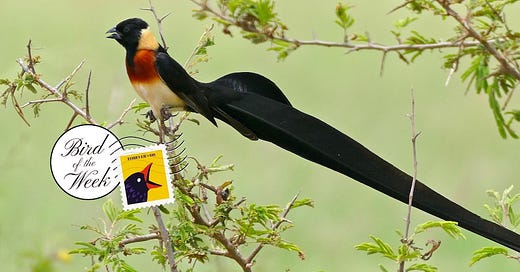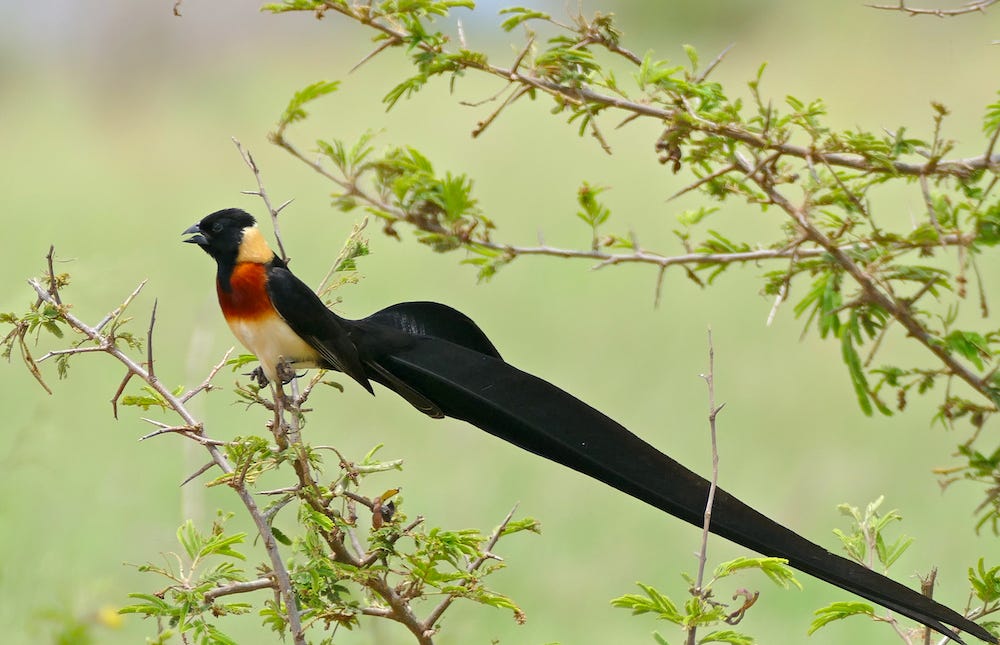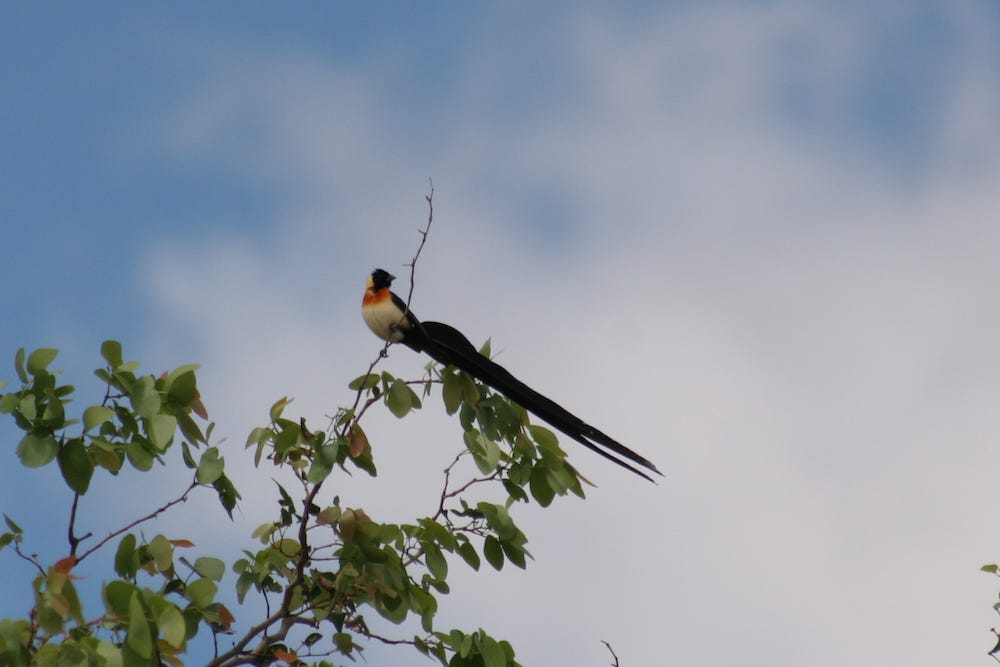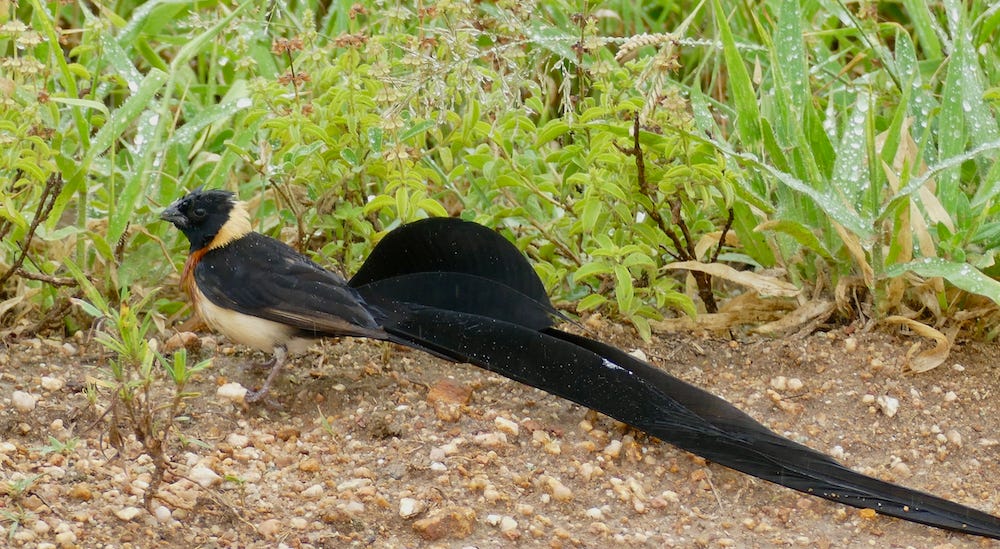Before we get to this bird, I want to say: I know it’s been way too long since our last bird. I’m sorry about that. Things have been uhhhhhhhhhhhhh kind of crazy out there??? And it has hindered our ability to write about birds. For instance, I was all set to do this blog yesterday, but then I couldn’t. Anyway, we have not forgotten about the birds. Just bear with us while we get used to the wheels fully falling off the government. OK, onto the bird, one day late but still as good as ever!
One of my favorite moments in The Simpsons is when Homer stumbles upon a man who looks exactly like him but gets distracted by this unbelievable discovery because he sees a dog with a puffy tail. This is the precise dialogue: “Oh my God! This man is my exact double! [GASP] That dog has a puffy tail!”
I bring this up not only because it’s funny or because everything always winds up coming back around to The Simpsons for me, but because today’s Bird of the Week is the kind of bird that I could see distracting me, Homer-like, from something as monumental as the discovery of my identical twin. I wouldn’t even have to change the words that much. They would go something like:
“Oh my God! This man is my exact double! [GASP] That bird has a long tail!”
You will understand me, I’m sure, when you see the bird in question. Meet the long-tailed paradise whydah.
Like!!!!!!! There are many birds with long tails—for instance, our old friend the long-tailed duck—and some of them have even longer tails than the long-tailed paradise whydah. But there’s something about this bird’s long tail that gives it an extra sheen of elegant confidence. Maybe it’s the striking black color, or that jutting curve in the middle before you really get to the tail part, or the sharp angles the tail creates against the sky. Whatever it is, it all adds up to a bird that not only looks awesome but seems to know it looks awesome. Or as the person who took the picture below wrote, “This little bird was very proud of his tail.”
This assertion was immediately supported in the comments.
Yeah, what Gini~ said!
The paradise whydah can be found throughout a lot of eastern and southern Africa. It spends much of its time doing standard little bird things, like eating bugs and seeds. It’s also, grimace, a brood parasite—one of those birds that sneaks its eggs into another bird’s nest and bounces. Also, check out this kind of wow fact courtesy of Wildlife Vagabond:
The long-tailed paradise whydah has not only evolved eggs that look similar to the eggs of the host species, but the chicks also have the same vocalizations as the hosts’ chicks. Additionally, the male paradise whydah learns the song of the host species and uses it as his own song when attracting females during the breeding season.
Imagine being so intent on not being around for your kids that they evolve to sound like the folks you’re dumping them on. That’s deadbeat dedication right there. Anyway, it doesn’t seem like the non-wydah birds are too mad about the arrangement. And paradise whydahs don’t go so far as to kill the non-wydahs they’re infiltrating, like other brood parasites might. So that’s something..?
OK back to why we’re here: the long tail. It should surprise nobody that it’s connected to breeding. When it’s not time to mate, the tail is not so long and the birds are not as colorful. When it is, hello! Tail long! Colors assemble!
This is what it looks like in the wild:
Glorious.
OK, that’s it for this week! That bird has a long tail!!!!!! Until next time.
A reminder: you can check out our complete Bird of the Week list here, and get in touch with your bird suggestions at hello@discourseblog.com.










Seems like that tail would get in the way from time to time...